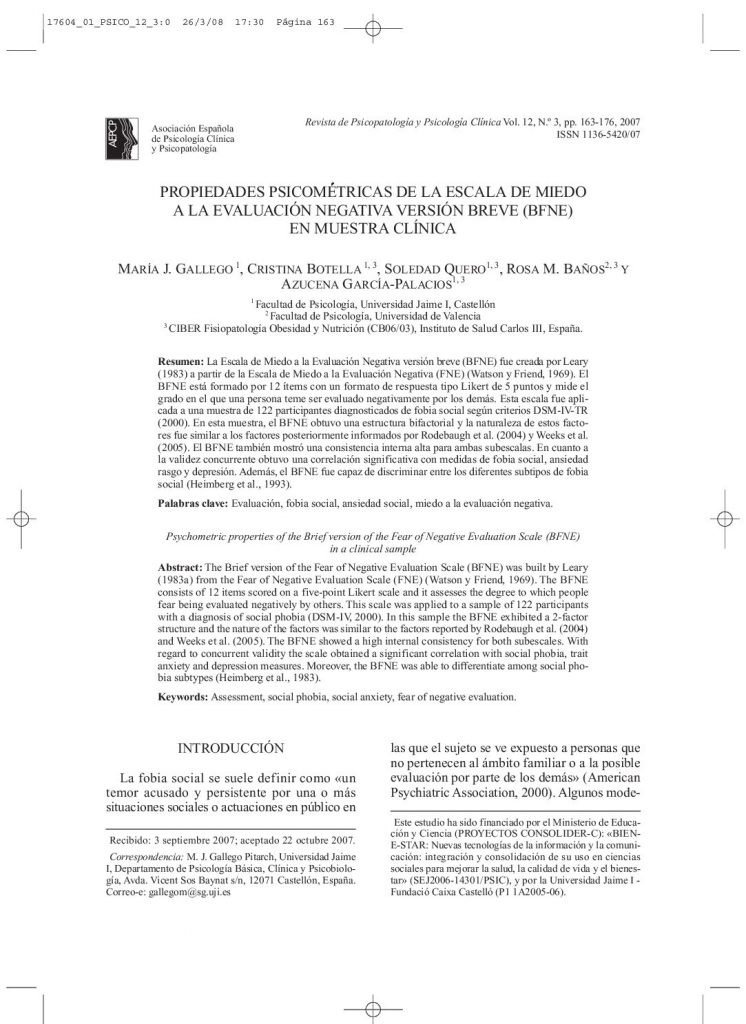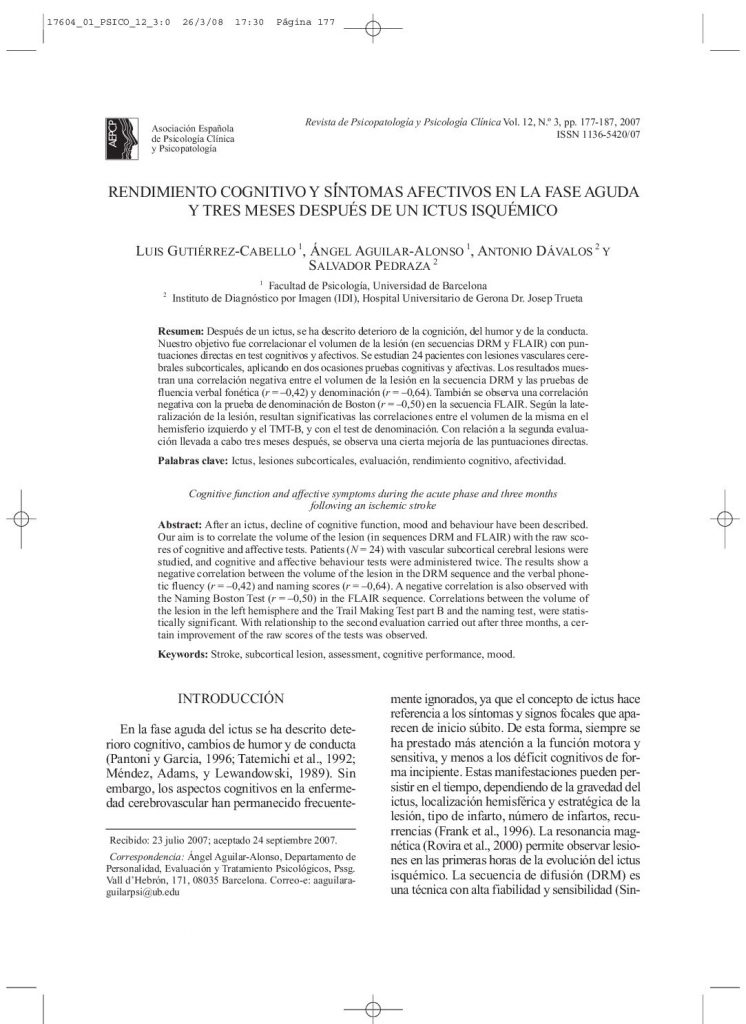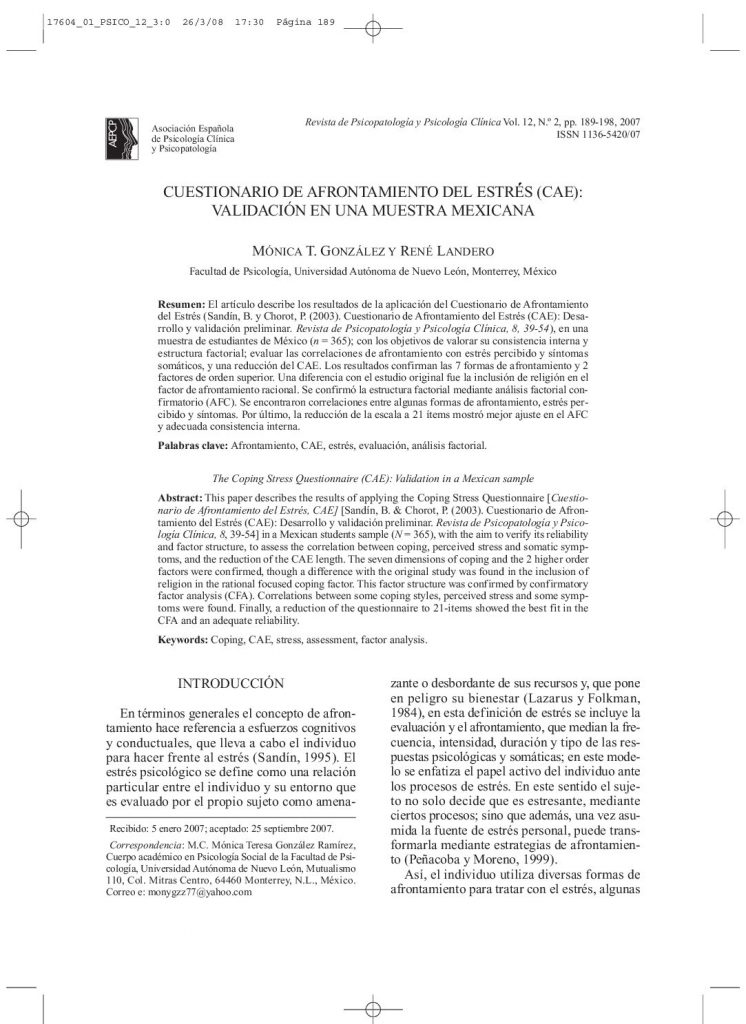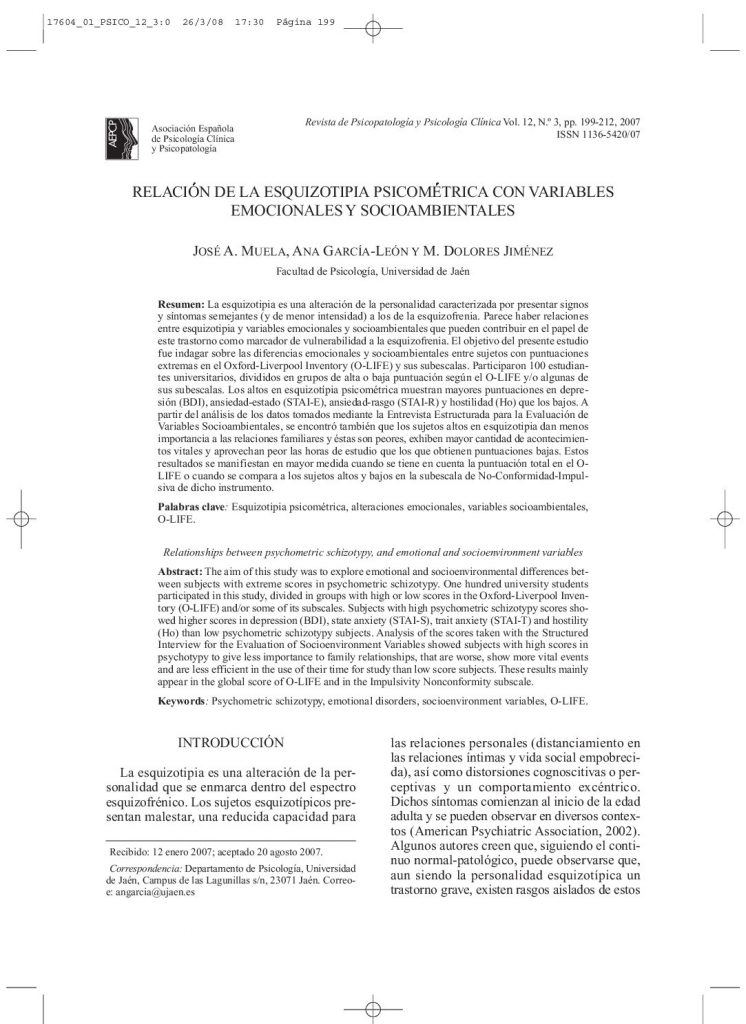Subtipos de ansiedad social en población adulta e infanto-juvenil: Distinción cuantitativa versus cualitativa.
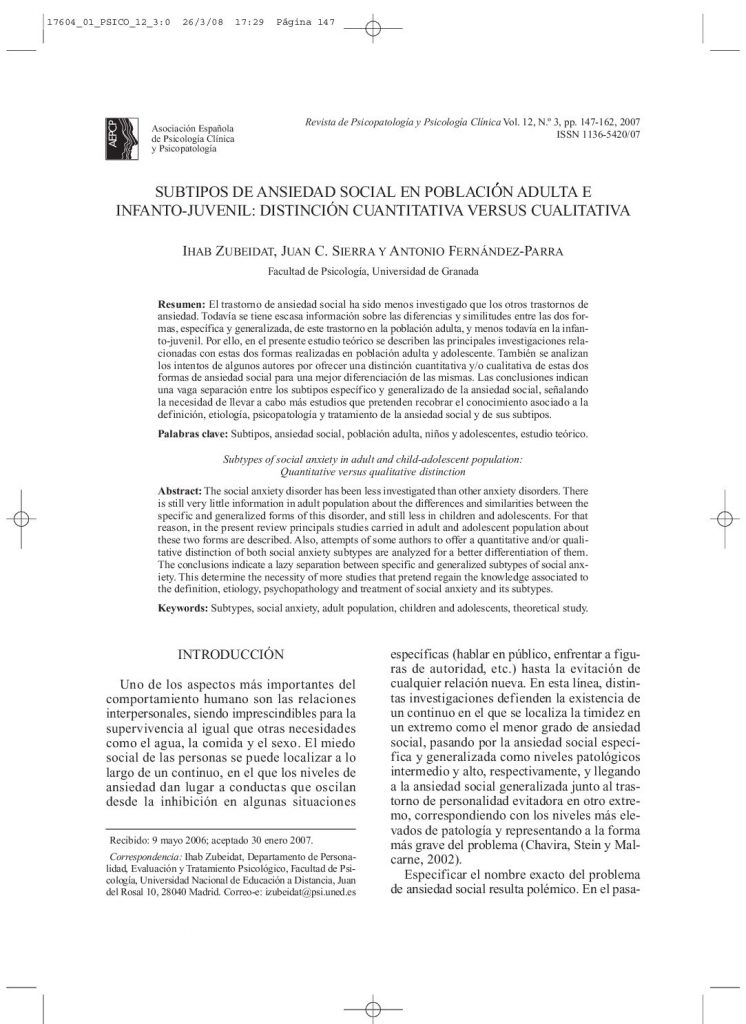
- Subtipos de ansiedad social en población adulta e infanto-juvenil: Distinción cuantitativa versus cualitativa.
- Propiedades psicométricas de la Escala de Miedo a la Evaluación Negativa versión breve (BFNE) en muestra clínica.
- Rendimiento cognitivo y síntomas afectivos en la fase aguda y tres meses después de un ictus isquémico.
- Cuestionario de afrontamiento del estrés (CAE): Validación en una muestra mexicana.
- Relación de la esquizotipia psicométrica con variables emocionales y socioambientales.
- Información sobre criterios de calidad de la Revista de Psicopatología y Psicología Clínica.
The social anxiety disorder has been less investigated than other anxiety disorders. There is still very little information in adult population about the differences and similarities between the specific and generalized forms of this disorder, and still less in children and adolescents. For that reason, in the present review principals studies carried in adult and adolescent population about these two forms are described. Also, attempts of some authors to offer a quantitative and/or qualitative distinction of both social anxiety subtypes are analyzed for a better differentiation of them. The conclusions indicate a lazy separation between specific and generalized subtypes of social anxiety. This determine the ne-cessity of more studies that pretend regain the knowledge associated to the definition, etiology, psy-chopathology and treatment of social anxiety and its subtypes.
El trastorno de ansiedad social ha sido menos investigado que los otros trastornos de ansiedad. To-davía se tiene escasa información sobre las diferencias y similitudes entre las dos formas, específica y generalizada, de este trastorno en la población adulta, y menos todavía en la infanto-juvenil. Por ello, en el presente estudio teórico se describen las principales investigaciones relacionadas con es-tas dos formas realizadas en población adulta y adolescente. También se analizan los intentos de algunos autores por ofrecer una distinción cuantitativa y/o cualitativa de estas dos formas de ansiedad social para una mejor diferenciación de las mismas. Las conclusiones indican una vaga separación entre los subtipos específico y generalizado de la ansiedad social, señalando la necesidad de llevar a cabo más estudios que pretenden recobrar el conocimiento asociado a la definición, etiología, psico-patología y tratamiento de la ansiedad social y de sus subtipos.



